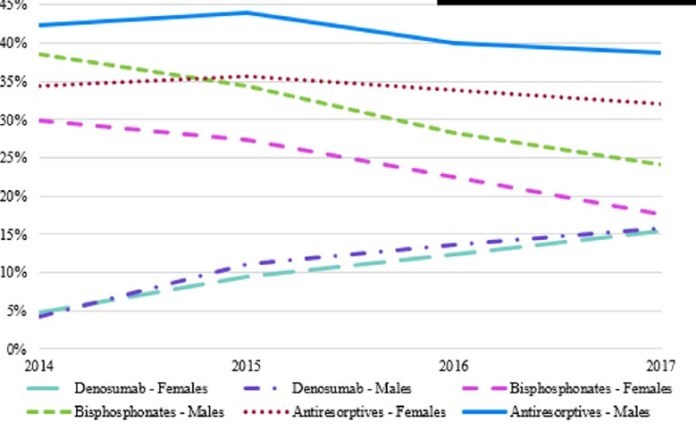Vitamin D is the most used anti-osteoporosis medication in senior homes in Australia
Anti-osteoporosis Medication Use in a High Fracture-Risk Population: Contemporary Trends in Australian Residential Aged Care Facilities.
Health Serv Insights. 2019 Jun 2;12:1178632919852111. doi: 10.1177/1178632919852111. eCollection 2019.
Overview Osteoporosis and vitamin D contains the following summary
{include}
Osteoporosis category includes the following
{include}
> 60% for Vitamin D

< 40% for other medications

📄 Download the PDF from VitaminDWiki
Lind KE1, Jorgensen ML1, Gray LC2, Georgiou A1, Westbrook JI1.
1 Centre for Health Systems and Safety Research, Australian Institute of Health Innovation, Macquarie University, Sydney, NSW, Australia.
2 Centre for Health Services Research, Faculty of Medicine, The University of Queensland, Woolloongabba, QLD, Australia.
Osteoporotic fractures impose substantial morbidity and mortality among older adults. Undertreatment is an ongoing concern; treatment rates declined following reports of adverse effects of guideline-recommended bisphosphonates, but new antiresorptives have since become available. Our goal was to identify contemporary trends in osteoporosis treatment guideline adherence in a high fracture-risk population.
We conducted a secondary data analysis using electronic health record data of adults aged ⩾65 years from 68 residential aged care facilities in Australia during 2014-2017 (n = 9094). Using medication administration data, we identified antiresorptive (bisphosphonates and denosumab) and vitamin D supplement use among residents with osteoporosis. Regression was used to evaluate temporal trends, and resident and facility characteristics associated with antiresorptive use and vitamin D use. In 2014, 34% of women and 42% of men with osteoporosis used antiresorptives; this decreased 8 percentage points by 2017. Antiresorptive use was higher among those with a history of fracture and lower in the last year of life. Denosumab use increased but did not substitute for the continued decline in bisphosphonate use.
Vitamin D was consistently used by more than 60% of residents and was higher among those with fracture history. Greater attention to the treatment of osteoporosis treatment rates among this high fracture-risk population is warranted.
